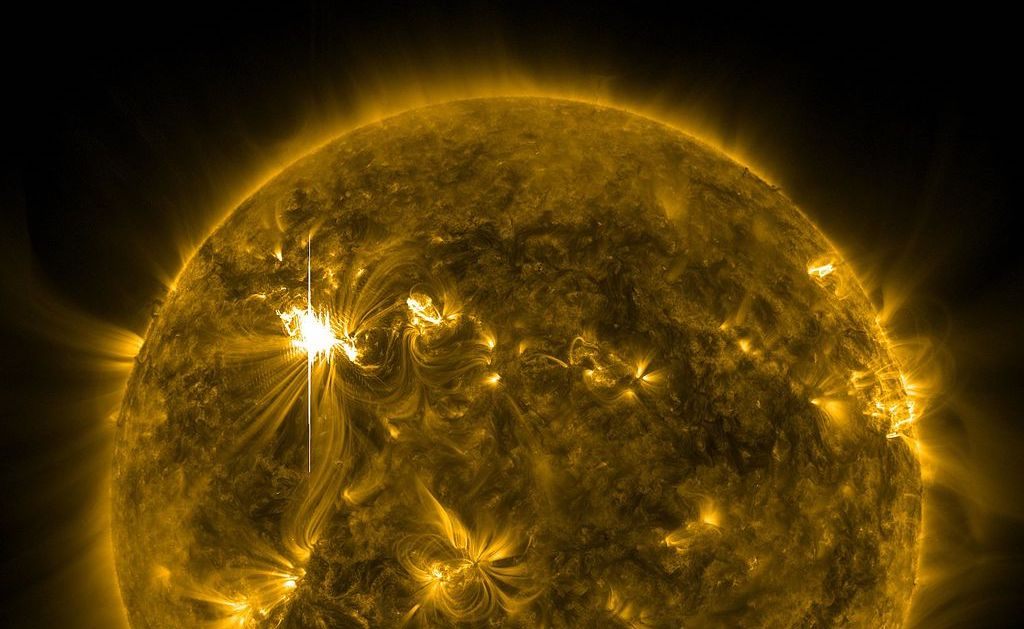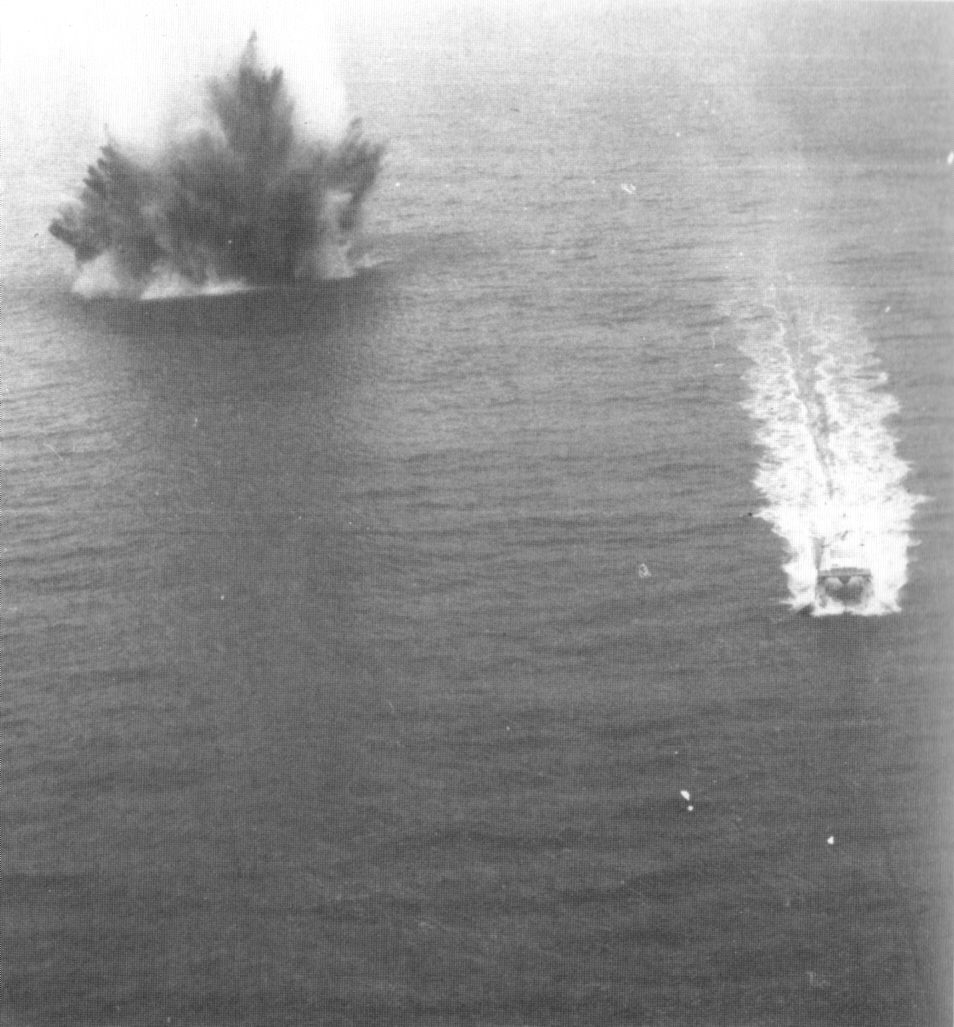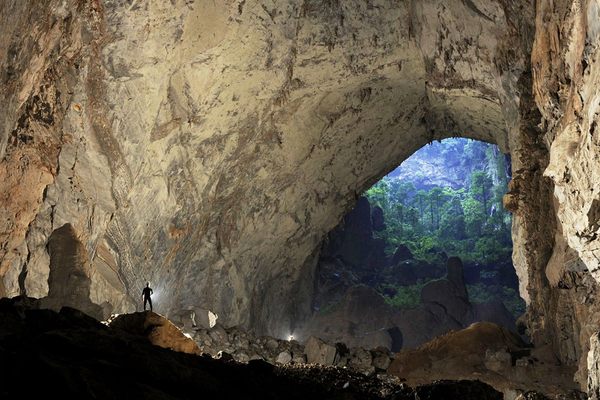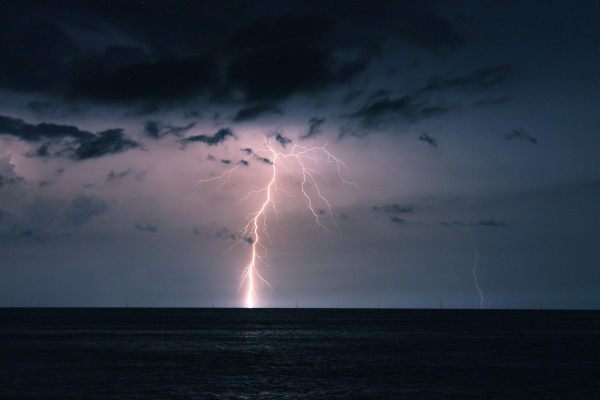The Sun Set Off 4,000 Sea Mines During the Vietnam War
Only now do scientists fully understand just how strong a 1972 solar storm was.

On August 4, 1972, near the North Vietnamese port of Hai Phong, dozens of mines hiding in the waters exploded in little more than an instant. American troops had laced the seas bordering North Vietnam with thousands of mines, lying in wait for ships to pass by. But in this case, no ships had set them off.
Up and down the coast, in the first few weeks of that August, this mysterious phenomenon repeated itself, until, according to one estimate, 4,000 destructor mines had detonated, as if ghost ships had been trawling the waters and sweeping them for danger.
There was an invisible force that was setting off the mines, though, and it had originated close to 93 million miles away. Early that month, the sun had produced a series of fierce flares, close to four orders of magnitude more powerful than a typical solar flare. During the peak of a solar cycle, the concentrations of magnetic energy will erupt from the sun and wash towards Earth. These were so strong that they saturated particle detectors used to measure such events and sent magnetometers off the scale. Bright auroras appeared over the United States and Europe, as far south as Spain. Had this solar storm coincided with a NASA mission to the moon, the particles colliding with a spaceship would have created nuclear effects strong enough to incapacitate and possibly kill the astronauts inside.
The mines that United States forces had dropped outside of the Vietnamese ports had magnetic triggers—sensors would measure the amplitude, polarity, or gradient of magnetic fields, waiting for an iron-heavy ship to pass by, tweaking the field and triggering the bomb. When the solar flares distorted the magnetic field of the Earth, the mines reacted. They blew.
To some extent, scientists always knew this solar storm was a notable event. One way to characterize flares is by measuring the level of solar energetic particles emitted, and on that count, this rated as the most extreme such event of the space age. But on the index most often used to categorize and compare solar storms, this one rated as “intense”—notable, but something that might happen a few times each year.
The mine explosions hinted, though, that this was an even more remarkable phenomenon. Described in a new paper published in Space Weather, the details of the mine explosions, “long buried in the Vietnam War archives,” along with data collected at the time, help show that the storm was much more severe than previously understood. Delores Knipp, a research professor of aerospace engineering at University of Colorado at Boulder and the lead author of the paper, now believes that 1972 event was in the same class as the strongest solar storm on record, the Carrington Event of 1859.
“I was completely taken aback,” she says. She knew that the 1972 event was a big radiation storm, and that the magnetic cloud released by the sun had made it to Earth in record time, under 15 hours. But the index used to categorize occurrences like this one had missed some of the features that made this storm so extreme.

Knipp’s curiosity began during an exchange with Brian Fraser, a co-author on the paper, who in the early 1970s was working at what would become Boulder’s Space Weather Prediction Center. He remembered Navy men coming in to talk to his boss at the time; all he knew was that the conversation involved the solar storm, military interests, and perhaps an explosive event. One Sunday, Knipp started searching online for any information about a naval explosion in that time period. Soon she found accounts by Navy men and one woman, describing sea mines and their use in naval warfare. The fragmentary information Fraser had passed along started to make sense.
Searching for more details, Knipp and her colleagues discovered long-forgotten scientific reports from the U.S., Europe, and Asia. Along with reports from engineering journals about the storm’s effects on power grids, they described an event of unusual power and impact. The United States had been on the night side of the planet when the flare hit Earth, but Japan was facing the sun and recorded data about the x-ray impact. That data was also used to reconstruct the event, but those reports received little attention from scientists outside Japan. Solar flares can also be classed by their x-ray emissions, and on this measure, the 1972 storm registered as an incredibly large flare.
“Two nights ago, I got an email from a now-retired Navy commander, who said he was a radio man at the time, and his ship was in the Gulf of Tonkin,” Knipp says. “He had just come on shift, and to quote him, ‘All hell broke loose.’ They spent the next 12 to 18 hours trying to establish radio contact with their group and headquarters. That’s exactly what I would expect for the level of event described by the Japanese reconstruction.”

Part of the reason scientists like Knipp are interested in these extreme solar events is because of the effect they can have on human technology, as the retired commander experienced. Federal officials have asked scientists to help establish what one-in-10-years, one-in-100-years, and one-in-500-years solar storms look like. A very bad one can damage space assets, which we’ve come to rely on for day-to-day activities. The 1972 storm, for instance, hit one spacecraft hard enough that in a few days it lost five percent of its capacity to generate power, a decline that usually occurs over five years.
Since then, the makers of spacecraft have built machines that can handle more intense solar activity, but they may not be prepared for the worst disasters. Out in the orbit of GPS satellites, for instance, “We’ve hardened those to the best of our ability, but they’ve never seen an event like 1972,” says Knipp.

























Follow us on Twitter to get the latest on the world's hidden wonders.
Like us on Facebook to get the latest on the world's hidden wonders.
Follow us on Twitter Like us on Facebook